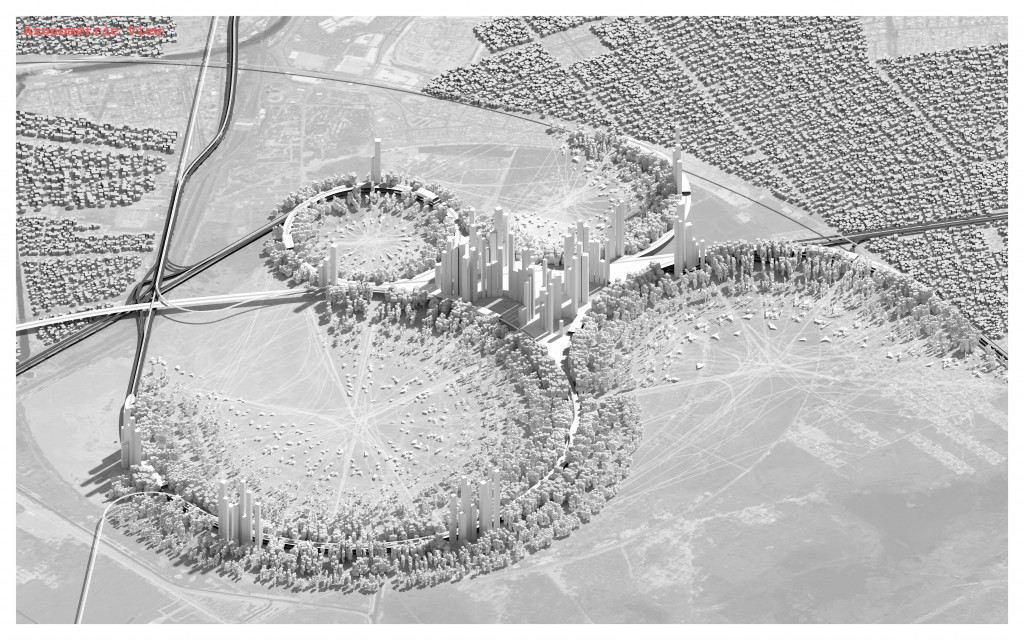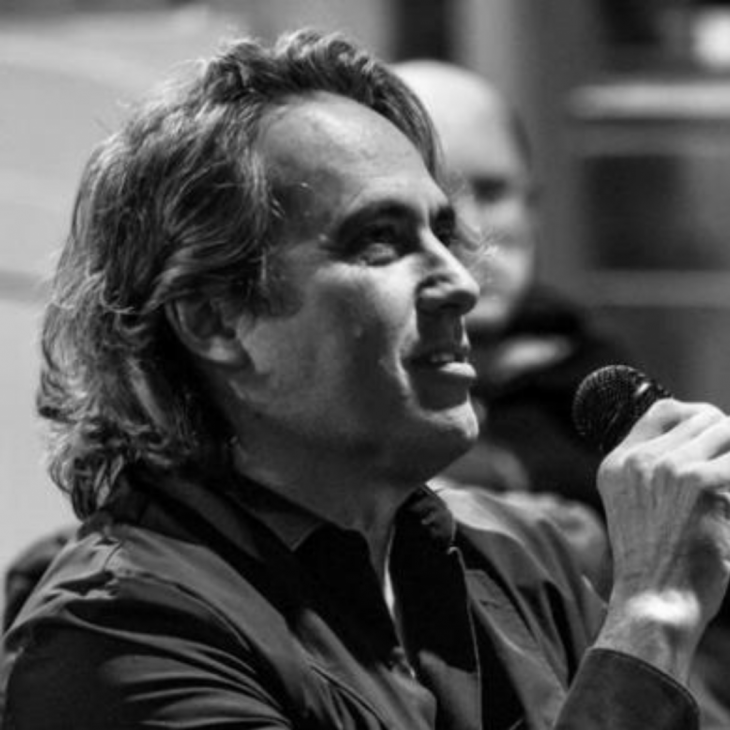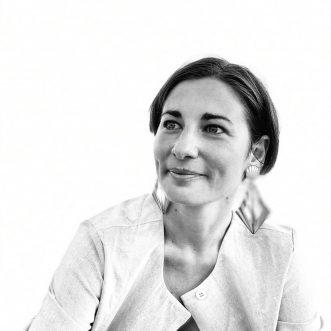X-URBAN DESIGN
The Circular Design of Massive Urban Post-Tourism
Seminar Faculty: Willy Müller & Mathilde Marengo
Credits: The Cross shaped skyscrapers to enhance densification and the growth of Mediterranean tourism in Benidorm.
Source: MVRDV
The evolution of tourist practices tends to question the opposition between tourist places and non-tourist places: some tourist places become ordinary places, while, on the contrary, certain ordinary places become tourist places.
These intersections between the ordinary and the extraordinary are sometimes caused by the idea that the 21st century marks the entry into a “post-tourist” era.
This era would be characterized by a dissolution of tourism as a factor field of specific sociability, spatiality and temporality and, therefore, by a “de-differentiation” between tourist and non-tourist, either in places or practices.
This dissolution of tourism in everyday practices would also represent a weakening of the distinction between the “tourism sector” as a commercial sphere and civil society. At a time when experiences have become the keyword of tourism marketing, professionals underline the need to respond to the demands of tourists with an offer based on a total and sincere commitment, which transcends the boundaries between “business” and “pleasure”
With the help of the development of new technologies, tourism practices now often consist of forms of self-organization that are supported by social networks, transport networks and accommodation networks according to modalities that are beyond the control of tourism professionals, on the one hand, and political regulation, on the other.
The notion of post-tourism was introduced in 1985, a concept that analyzes “post-tourists” as people less dependent on the tourism sector and who go through various types of tourism experiences. These would be distinguished by their preference for “play and playful transgression, ironic with artifice, in-authenticity and pastiche, provocation and even cynicism, based on the” why not?
In this ironic tourism, the main attraction factor would no longer be geographical, landscape or heritage, but would focus on the sensation and experience offered by events, shows, parties or by wild and hybrid recreational experimentations, in which novelty marketing and animation would play a central role.
This study has the main objective of investigating this perspective of tourism, taking as a reference the 20 years that have passed from Costa Iberica, and the unavoidable social, ecological and cultural commitment that is increasingly demanded of this citizen for hours in our cities .
That is the challenge of this Studio, within the general philosophy of the master in developing ideas and concepts for a Circular Design.

Credits: Inter-Loop, X-Urban Design Studio 2018/19, IAAC
While the tourism industry has been one associated with a high level of consumption, as well as often being associated with a negative connotation on behalf of residents, tourism has also been an important driver and opportunity for many cities in Europe towards their development. With the emergence of Mass Tourism in the middle of the twentieth century, tourism became a growing feature but also a driver for the growth, both economic and from a perspective of urban planning, of many European cities. In fact, Sir Peter Hall claims that the ‘age of mass tourism is the biggest single factor for change in the great capitals of Europe, and in many smaller historical cities too, in the last 30 years of this century’ (Hall, 1970, p. 445).
With this in mind, the X-Urban design Studio poses the question of how tourism can shape the future for cities, from pure consumption to circularity?
This change in paradigm will take the studio on a journey of some of the most impacted tourism landscapes in Spain, among these Benidorm, and the cities of the Costa Iberica movement, and to evaluate these, learn from them and leading figures associated to these, such as Winy Maas, or Luis Falcón, in order to design the paradigm shift necessary, and test this in the city of Barcelona.

*dates are subject to change
The city will give us the opportunity to design not only new urban tactics but architectural projects. A multi-scalar strategy will be proposed covering the range from the infrastructural scale to architectural scale, with a research-trip that will give the students the opportunity to deeply study and analyse its territory during at least one week. In order to do so, the Studio will also count on several means of support, based on digital instrumental activities and theoretical exercises.

Credits: X-Urban Design Studio 2017/18, IAAC
Faculty

Dr. Willy Müller graduated as an architect (1984) in Argentina and pursued doctoral studies at ETSAB-UPB (1986/88). He is a co-founder of the Institute for Advanced Architecture of Catalonia (IAAC) in 2001, becoming its Development Manager in 2004. He established his own office in Barcelona WMA, Willy Müller Architects in 1996, a recognized architectural firm achieving several international awards in competitions as well as with built projects, featuring his work in numerous exhibitions.
He is the co-author of several books, including Sociópolis, Media House Project, the Metapolis Dictionary of Advanced Architecture, and the Self-sufficient Housing. “Müller himself is a professional of proposals, not only for buildings but also, as concepts.
– co-Founder IAAC, Institute of Advanced Architecture of Catalonia.2003
– Director Urban Sciences Laboratory IAAC (since 2015).
– Director X-UrbanStudio, Master Advanced Architecture IAAC 2003/18
– General Manager Rio de Janeiro Metropolitan Master Plan. 2016/18
– Former CEO Barcelona Regional Agency, BR, 2011-2015
– Former Development Director IAAC, 2003/2007.
– Member Board of Trust IAAC Foundation (since 2003).
– Founder WMA-Willy Müller Architects SLP (since 1996).
– Visiting Professor Sci_Arc, Los Angeles, USA (since 2017).
– Director Operaçoes Urbanas Consorciadas, Fortaleza, Brasil 2017/18
Link: willymullerarchitects.com

Dr. Mathilde Marengo is an Australian – French – Italian Architect, with a PhD in Urbanism, whose research focuses on the Contemporary Urban Phenomenon, its integration with technology, and its implications on the future of our planet. Within today’s critical environmental, social and economic framework, she investigates the responsibility of designers in answering these challenges through circular and metabolic design.
She is Head of Studies, Faculty and PhD Supervisor at the Institute for Advanced Architecture of Catalonia’s Advanced Architecture Group (AAG), an interdisciplinary research group investigating emerging technologies of information, interaction and manufacturing for the design and transformation of the cities, buildings and public spaces. Within this context, Mathilde researches, designs and experiments with innovative educational formats based on holistic, multi-disciplinary and multi-scalar design approaches, oriented towards materialisation, within the AAG agenda of redefining the paradigm of design education in the Information and Experience Age.
Her investigation is also actuated through her role in several National and EU funded research projects, among these Innochain, Knowledge Alliance for Advanced Urbanism, BUILD Solutions, Active Public Space, Creative Food Cycles, and more. Her work has been published internationally, as well as exhibited, among others: Venice Biennale, Shenzhen Bi-City Biennale, Beijing Design Week, MAXXI Rome.
